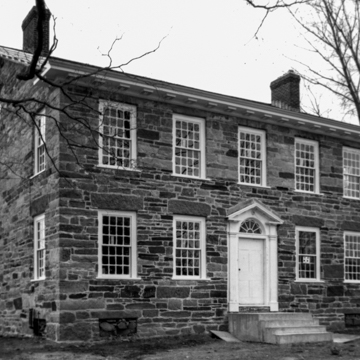A straightforward gable-roofed, Georgian-plan dwelling built of coursed, local brown-stone rubble, the Torrey house offers a glimpse of early life along Lake Champlain and of the evolution of local building traditions. Among the finest lakeside residences north of Burlington, it was built in 1800 by Nathaniel Torrey, a Revolutionary War veteran and merchant from Lanesboro, Massachusetts. Torrey settled on this site in 1794, establishing a wharf, warehouse, and store. At a time when local roads were poor or nonexistent, Lake Champlain was the most important commercial highway, and Torrey's Landing became a major point for exporting potash, Vermont's first cash crop, to Canada. Passed to Torrey's son Milton, the house and business remained a focal point of early shipping. Milton's boat was impounded during the federal embargo of 1807, which prohibited trade between the U.S. and British possessions. The Canada embargo was felt keenly in Franklin County. This house is among the first stone dwellings built along the Champlain shore and provides evidence of the earliest quarrying and dressing techniques found in Vermont. (Cliffs exposed along the lake required little excavation to obtain stone, and in winter the lake provided a flat, frozen surface to easily slide stone long distances.) Stylistically, the house's fine, wooden, late Georgian cornices with mutule blocks and its frontispiece, with fluted pilasters that support a broken entablature pediment with half-round fanlight, relate it to—if it is not the actual work of—William Sprats.
You are here
Torrey House
If SAH Archipedia has been useful to you, please consider supporting it.
SAH Archipedia tells the story of the United States through its buildings, landscapes, and cities. This freely available resource empowers the public with authoritative knowledge that deepens their understanding and appreciation of the built environment. But the Society of Architectural Historians, which created SAH Archipedia with University of Virginia Press, needs your support to maintain the high-caliber research, writing, photography, cartography, editing, design, and programming that make SAH Archipedia a trusted online resource available to all who value the history of place, heritage tourism, and learning.







